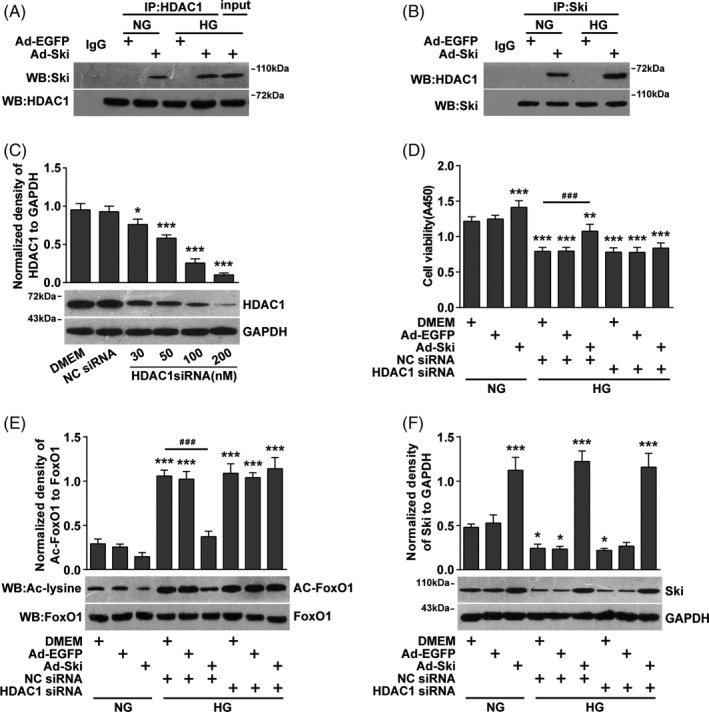FIGURE 5.

Increasing Ski protein levels under HG conditions promoted the binding of Ski to HDAC1, and the inhibition of HDAC1 significantly reduced the inhibitory effect of high Ski protein expression on Ac‐FoxO1. Fibroblasts were transfected with HDAC1 siRNA or NC siRNA for 24 hours and then infected with Ad‐ Ski or Ad‐ EGFP, as indicated, for another 48 hours in the presence of NG or HG conditions. A, B, IP of Ski and HDAC1 using an anti‐Ski or anti‐HDAC1 antibody as the IP antibody and Western blotting with an anti‐HDAC1 or anti‐Ski antibody. Rabbit IgG served as a negative control, and input is the total cell lysate of the control without anti‐HDAC1 or anti‐Ski immunoprecipitation. C, HDAC1 levels were detected by Western blot analysis. n = 3, *P < .05, **P < .01, ***P < .001 compared to the NC siRNA group, one‐way ANOVA, Dunnett's post hoc tests. D, A CCK‐8 assay was used to evaluate fibroblast viability. n = 8, *P < .05, **P < .01, ***P < .001 compared to the DMEM + NG group; #P < .05, ##P < .01, ###P < .001 compared to the DMEM + NC siRNA + HG group, one‐way ANOVA, Dunnett's post hoc tests. E, IP with an anti‐FoxO1 antibody followed by immunoblotting with anti‐acetyl‐lysine (ac‐lysine) or total FoxO1 antibodies. F, Western blot analysis of Ski protein expression levels. The data are presented as the mean ± SEM, and each experiment was repeated three times. *P < .05, **P < .01, ***P < .001 compared to the DMEM + NG group; #P < .05, ##P < .01, ###P < .001 compared to the DMEM + NC siRNA + HG group, one‐way ANOVA, Dunnett's post hoc tests
